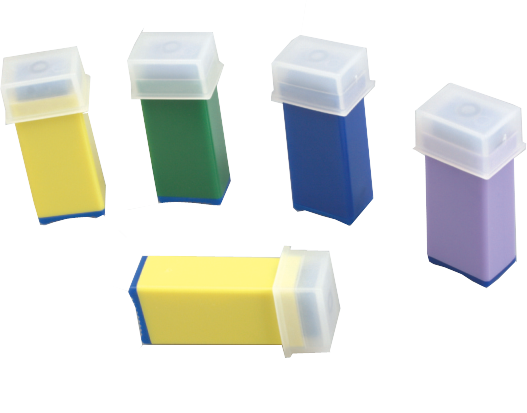
Safety Blood Lancet
Safety lancets are retractable needles that prevent accidental pricks and reduce the risk of infection.
| Ref. No.: | Description: | Gauge/Depth: |
|---|---|---|
| NME000501 | Yellow (Junior) | 26G/1.8mm, 2.4mm |
| NME000503 | Orange (Comfort) | 21G/2.2mm |
| NME000504 | Green (Comfort) | 21G/1.8mm |
Safety lancets are designed to minimize the risk of accidental needle sticks. They are usually disposable and have a protective guard that covers the sharp point when not in use. Safety lancets come in different sizes depending on the desired depth of puncture. Most safety lancets are made of stainless steel or plastic and have a retractable needle that is automatically covered after use. The design of safety lancets varies, but they all serve the same purpose – to reduce the risk of accidental needle sticks. There are many different brands of safety lancets on the market, but they all work in basically the same way. To use a safety lancet, you simply push down on the activator button to expose the needle and then press it against your skin. The needle will automatically retract into the device after it punctures your skin so there is no need to worry about re-capping or disposing of used needles. Safety lancets are an essential tool for anyone who needs to frequently test their blood sugar levels or perform other diagnostic tests that involve puncturing their skin. They are much safer than traditional lancets and can help reduce the risk of accidental needle sticks.
If you are a diabetic or have another condition that requires you to regularly test your blood sugar levels, you know that lancets are an essential part of the process. But did you know that there is such a thing as a safety lancet? A safety lancet is a device that is used to puncture the skin in order to obtain a small sample of blood. They are designed to be safer and more comfortable to use than traditional lancets.
Here is a step-by-step guide on how to use a safety lancet:
1. Before using the lancet, wash your hands with soap and water.
2. Remove the cap from the lancet and insert it into the device.
3. Adjust the depth setting on the device so that it punctures the skin to the desired depth.
4. Place the tip of the device against your finger and press the trigger button.
5. The lancet will puncture your skin and collect a small sample of blood.
6. Apply pressure to your finger with a cotton ball or gauze pad to stop any bleeding.
7. Remove the lancet from your finger and replace the cap on the device.
There are two main types of safety lancing devices: those that use a single-use lancet and those that reuse the lancet. Single-use lancets are designed to be used once and then disposed of. These lancets are typically made of plastic or metal and have a sharp point that punctures the skin. Reusable lancets can be used multiple times before they need to be replaced. These lancets are often made of stainless steel and have a blunt tip that punctures the skin. Both types of safety lancing devices have their own advantages and disadvantages. Single-use lancets are more convenient because you don't have to worry about sterilizing them after each use. However, they can be more expensive than reusable lancets. Reusable lancets are less expensive in the long run, but you need to take care to sterilize them properly after each use.
There are a few reasons why you might want to consider using a safety blood lancet for your diagnostic testing needs. For one, safety blood lancets are designed to protect you from accidental needle sticks. They also help to ensure that you get a clean, precise sample of blood for your test. Another benefit of using a safety blood lancet is that they can help to reduce the pain and discomfort associated with traditional finger-stick devices. This is because safety lancets are designed to penetrate the skin more shallowly than other devices. As such, they cause less tissue damage and provide a quicker, less painful way to collect a blood sample. Finally, safety blood lancets can help to save you money in the long run. This is because they can be reused multiple times, which means that you won’t have to purchase new lancets as often. When used properly,safety blood lancets can provide an accurate, reliable and affordable way to collect the diagnostic information you need.